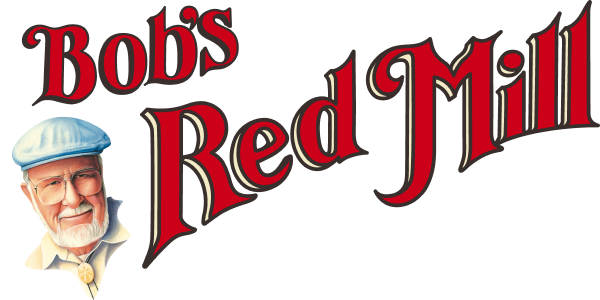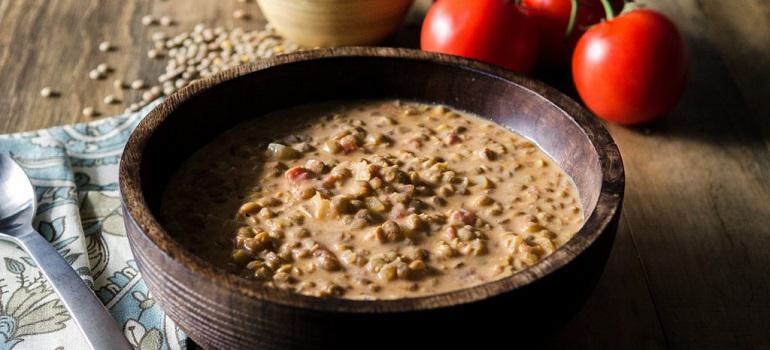


 You may have heard the word "non-perishable" thrown around before and wondered what a non-perishable food item is? Non-perishable food or "shelf-stable" food is food that you can store safely at room temperature for extended periods. This kind of food often has expiration dates that can stretch years! Having a supply of non-perishable foods at your home is always a good idea. Whether you choose to save them for an emergency or use them as a part of your weekly meals, they are an essential pantry item.
Not only is this food practical, but if chosen wisely, it can be delicious too! Because non-perishable ingredients have an extended time frame, keeping these foods on hand will ensure that you always have a meal to cook. This makes them perfect for when you're low on fresh foods and don't want to run to the grocery store. Knowing which non-perishable items to purchase will help save you time when you're searching the grocery store aisles.
You may have heard the word "non-perishable" thrown around before and wondered what a non-perishable food item is? Non-perishable food or "shelf-stable" food is food that you can store safely at room temperature for extended periods. This kind of food often has expiration dates that can stretch years! Having a supply of non-perishable foods at your home is always a good idea. Whether you choose to save them for an emergency or use them as a part of your weekly meals, they are an essential pantry item.
Not only is this food practical, but if chosen wisely, it can be delicious too! Because non-perishable ingredients have an extended time frame, keeping these foods on hand will ensure that you always have a meal to cook. This makes them perfect for when you're low on fresh foods and don't want to run to the grocery store. Knowing which non-perishable items to purchase will help save you time when you're searching the grocery store aisles.
 Nut butter is one of our personal favorite items on this non-perishable food list. Great on toast, when added to oatmeal or as a mid-day treat, nut butter is packed with essential vitamins and nutrients. Depending on which type you purchase, nut butter can be a relatively cheap and easy food to stock up on. Creamy, nutrient-dense and full of flavor, it can be bought in large portions or small squeezable packets. Purchasing an on-the-go form of nut butter is great if you plan to take it camping or backpacking as a treat.
While storage temperature can affect shelf life, most commercial nut butters can be stored up to nine months. Natural nut butter that does not contain preservatives has a shorter shelf life of about three months. Always check the expiration date of the item before buying it.
Looking for a great way to use your favorite nut butter? Try adding it to a smoothie like this Peanut Butter Banana Smoothie.
Nut butter is one of our personal favorite items on this non-perishable food list. Great on toast, when added to oatmeal or as a mid-day treat, nut butter is packed with essential vitamins and nutrients. Depending on which type you purchase, nut butter can be a relatively cheap and easy food to stock up on. Creamy, nutrient-dense and full of flavor, it can be bought in large portions or small squeezable packets. Purchasing an on-the-go form of nut butter is great if you plan to take it camping or backpacking as a treat.
While storage temperature can affect shelf life, most commercial nut butters can be stored up to nine months. Natural nut butter that does not contain preservatives has a shorter shelf life of about three months. Always check the expiration date of the item before buying it.
Looking for a great way to use your favorite nut butter? Try adding it to a smoothie like this Peanut Butter Banana Smoothie.
 Grains might just be our favorite shelf-stable food item on the list. Quinoa, brown rice and rolled oats are only a few of the many grains that you can stock your pantry with. Packed with essential vitamins and nutrients, wholegrains are a vital part of any diet. Because grains are incredibly versatile, they can be used to make nearly any meal! Whether you're craving a fresh quinoa salad or a hearty breakfast bowl of oats, keeping grains on hand will guarantee that you'll always have a healthy meal when you need it most. They're the perfect food to enjoy daily, so stock up in case of emergency, or pack some for your next camping trip. Due to their long-lasting nature, grains like oats can often last over a year at room temperature if properly stored.
Use grains in savory dishes like this Breakfast Bulgur and Millet Grain Bowl.
Grains might just be our favorite shelf-stable food item on the list. Quinoa, brown rice and rolled oats are only a few of the many grains that you can stock your pantry with. Packed with essential vitamins and nutrients, wholegrains are a vital part of any diet. Because grains are incredibly versatile, they can be used to make nearly any meal! Whether you're craving a fresh quinoa salad or a hearty breakfast bowl of oats, keeping grains on hand will guarantee that you'll always have a healthy meal when you need it most. They're the perfect food to enjoy daily, so stock up in case of emergency, or pack some for your next camping trip. Due to their long-lasting nature, grains like oats can often last over a year at room temperature if properly stored.
Use grains in savory dishes like this Breakfast Bulgur and Millet Grain Bowl.
 Dried and canned soups are a great choice when prepping your pantry for an emergency. Many canned soups can last up to five years at room temperature, which makes them a preferred item by food donation organizations. The best part about canned soups and chilis is that most can be eaten straight out of the can. This ready-to-go aspect makes soup one of the most accessible pantry items to grab when you need a quick meal. Depending on which variety of soup you purchase, several soups provide an array of nutrients. When shopping for your shelf-stable soup, we recommend purchasing those that are low in sodium and use natural, wholesome ingredients. While these varieties might spoil a bit sooner, they're often better for you and still have a long-lasting shelf life.
Want to make homemade soup to save for later? Try doubling up on this Creamy Lentil Soup Recipe and storing the leftovers in the freezer!
Dried and canned soups are a great choice when prepping your pantry for an emergency. Many canned soups can last up to five years at room temperature, which makes them a preferred item by food donation organizations. The best part about canned soups and chilis is that most can be eaten straight out of the can. This ready-to-go aspect makes soup one of the most accessible pantry items to grab when you need a quick meal. Depending on which variety of soup you purchase, several soups provide an array of nutrients. When shopping for your shelf-stable soup, we recommend purchasing those that are low in sodium and use natural, wholesome ingredients. While these varieties might spoil a bit sooner, they're often better for you and still have a long-lasting shelf life.
Want to make homemade soup to save for later? Try doubling up on this Creamy Lentil Soup Recipe and storing the leftovers in the freezer!